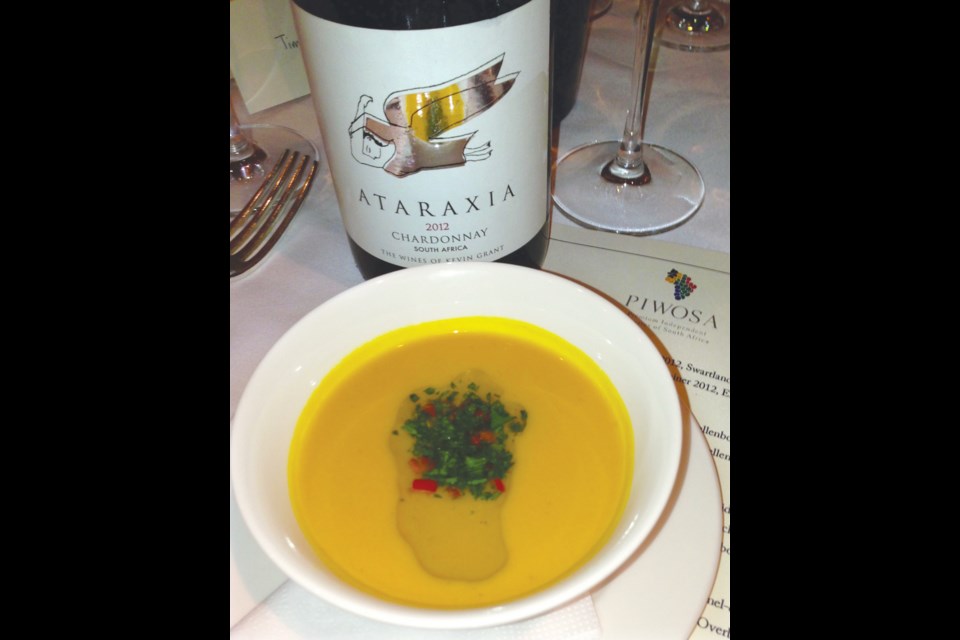No other liquor market in the world is as competitive as the U.K.'s where the consensus is that if you can make it here, you can make it anywhere.
That's just one reason why this past week top wineries from Argentina, Chile and South Africa travelled here to pour their wares at The Beautiful South, a wide-ranging show at London's hallowed Olympia.
The structure itself enjoys a storied history. When completed in 1885, its Grand Hall was the largest building in the country, covered by a revolutionary system (at the time) of expanding iron and putty-free glass panels. The building also enjoyed its slice of royal notoriety: the Prince of Wales (the future King Edward VII) was reputed to have his own suite on site (convenient for discreet liaisons for which he was renowned). But I digress.
Some years ago, the South Africans realized it made a whole lot more sense to invite the wine world to London than have people travel the huge distance to The Cape. Now the Chileans and Argentineans are also on board, although this year at least the show was still dominated by South Africa.
My visit kicked off with an excellent dinner (at Quo Vadis, in Karl Marx's old Soho flat) with a group of Cape producers, who've come together under the banner of PIWOSA (The Premium Independent Wineries of South Africa). The association intends to change the perception of being a budget-driven wine region to one of producers that can and do compete with the best in the world.
Another good reason for PIWOSA to be here, according to Raats Family Wines' owner Bruwer Raats, is the long history and connections that South Africa enjoys with the U.K. that reach back more than three centuries.
PIWOSA, which it's safe to say was inspired by similar alliances elsewhere such as Australia's First Families of Wine, will embark on its Canadian launch next year with a keenly anticipated string of events across the country. And if this week's tastes are anything to go by, Canadian wine lovers have lots to look forward to.
The show served up a solid reminder of the sheer range of styles the Cape has to offer.
One enlightening moment came with a taste through the Chenin Blanc Producers table, where some 50 wines both oaked and unoaked were grouped together. One of the top drops proved to be the superbly balanced Mullineux 2012 White (Swartland), an elegantly crafted, astonishingly vibrant, mineral-streaked blend of Chenin Blanc (75 per cent), with Clairette Blanche and Viognier, indicative of the far more sophisticated approach to the variety undertaken in recent years. The flavours are fresh and clean, with the perfect balance of fruit and acidity (92 points).
An ideal partner to a beautifully textured pumpkin soup turned out to be Ataraxia's tropical and mineral-toned, gently creamy Chardonnay 2012 (Upper Hemel-en-Aarde), another polished indicator of where things are headed both in terms of style and quality (91 points).
Nor did Bruwer Raats' 2010 Stellenbosch Cab Franc disappoint: a juicy, mouth-filling mix of spicy black fruit with hints of anise, coffee and pepper notes with a touch of garrigue wrapped in easy tannins with a polished, lingering end and perfect with impossibly tender local Swaledale lamb. Or, as Bruwer says: The elegance of Burgundy, the spiciness of Rhone and the structure of Bordeaux all in one variety (91 points, Liberty Wines).
As usual, the London show offered up some cutting edge, novel packaging: Tangled Tree's nifty, plastic-bottled, easy sipping "lifestyle" wines are 80 per cent lighter than glass, use wood-free paper labels (made from sugar cane), and don't mind at all being dropped on the floor.
Once again, the Cape proved it has plenty to offer both inside the bottle and out. And, with luck, we'll be seeing plenty more of these wines quite soon.
Tim Pawsey covers food and wine for numerous publications and online as the Hired Belly at hiredbelly. com. Contact: rebelmouse. com/hiredbelly, on Twitter @hiredbelly or email [email protected].



